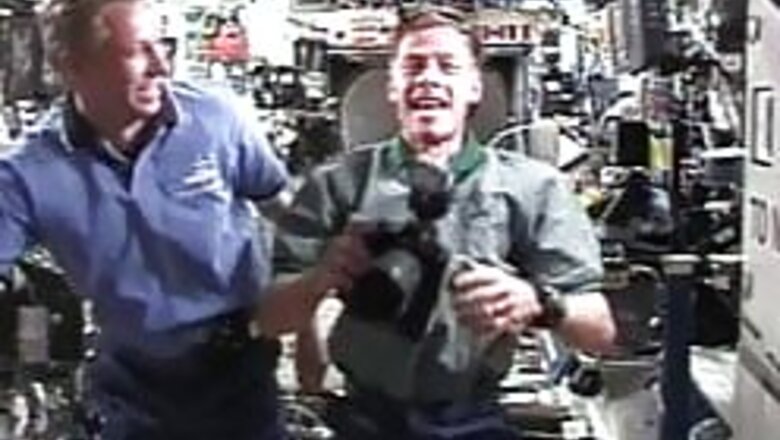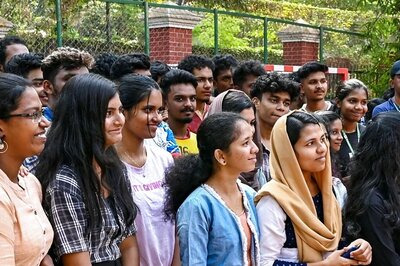
views
Cape Canaveral (Florida): Spacewalking astronauts worried they have may have gummed up a successful job connecting an addition to the international space station on Tuesday when a bolt, spring and washer floated free.
Astronaut Joe Tanner was working with the bolt when it sprang loose, floated over the head of Heidemarie Stefanyshyn-Piper and skittered across the 17 1/2-ton box-like truss that they were hooking up.
While the washer went out into space safely, Tanner worried the bolt and spring could get into the truss’s wiring and tubing and causing problems.
''Not a good thing,'' Tanner said. ''Let's hope it doesn't end up somewhere in the mechanism.
''I don't see it anywhere.''
NASA managers were examining whether the lost bolt would be a problem. Space debris can be dangerous if it punctures space station walls or spacesuits and can jam crucial mechanisms. However, spacewalkers have a long history of losing material in space. In July, Discovery spacewalkers lost a 14-inch-long spatula that floated away.
The free-flying bolt marred an otherwise successful and speedy six-hour, 26-minute spacewalk on Tuesday morning. Two other spacewalks are planned for later this week.
''You did a phenomenal job and set the bar very high for the rest of the assembly,'' Pam Melroy radioed from Mission Control when the spacewalk ended late on Tuesday morning.
Tanner and Piper zipped through a jam-packed list of arduous but mundane construction tasks, putting NASA ahead of schedule in connecting the addition. With extra time, Mission Control assigned them half a dozen extra jobs of bolt removing and cover unlatching that would have been part of a spacewalk on Thursday.
That was when the bolt got lost.
Atlantis astronauts Dan Burbank and Steve MacLean will head into space on Thursday.
The spacewalk was a first for rookie astronaut Piper, who joined an elite club of female spacewalkers.
PAGE_BREAK
Only six other women have participated in 159 U.S. spacewalks, and only one has gone on any of the 118 Russian spacewalks. A major reason for the lack of female spacewalkers is the spacesuit, which isn't designed for small sizes, said Piper, who is 5-foot-10 (1.78 Meters). ''If you fit in a suit then the easier it is to work,'' she said.
Before they started, astronauts MacLean and Jeff Williams, from inside the space lab, used the robotic arm to install the 45-foot (13.7-meter) addition on the left side of the space station's truss system. Two solar arrays will be unfurled from the truss on Thursday.
The spacewalk started a short time later at 0917 GMT. Tanner was first to enter the void of space tethered to the space station, followed by Piper.
''Welcome to the world of EVAs,'' Tanner told Piper, using the NASA term for spacewalks _ extra vehicular activities.
''Aaah. Wonderful,'' Piper responded.
Tanner and Piper then started connecting wiring and cables to the $372 million (292.61 million) truss segment that was moved Monday from space shuttle Atlantis' cargo bay to the space station's robotic arm. Wearing bulky suits and gloves, the spacewalking electricians also installed and disconnected bolts, connected tubes and activated latches _ tasks that had to be performed quickly so the electronic components do not get cold.
The team worked briskly, at one point putting themselves so far ahead of the schedule that Mission Control reminded them to take a break.
''The team is working hard to keep up with you guys,'' Mission Control said.
















Comments
0 comment